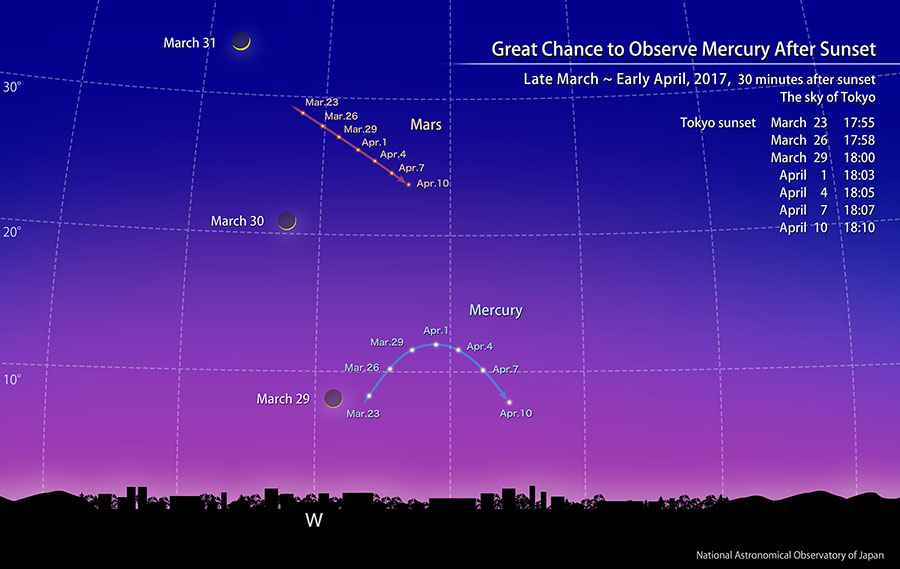Great Chance to Observe Mercury After Sunset (March, 2017)

Find Mercury Using the Moon as a Guide
At the end of March and the beginning of April, Mercury can be easily found in the western sky after sunset.
Mercury is generally a difficult planet to spot because it shines at low altitude. On April 1, it reaches its greatest eastern elongation. From March 26 to April 7, its altitude is over 10° at 30 minutes after sunset as seen from Tokyo, making it very easy to observe. Let’s take this great chance to observe Mercury!
In particular, on March 29, Mercury is located to the upper right of the Moon. Finding the thin 1 day old Moon itself might be difficult. However, this is a great chance to look for Mercury by using the Moon as a guide.
At 30 minutes to an hour after sunset, before the sky becomes completely dark, let’s try looking just above the horizon from a location where there are no obstacles in the western sky. It is much easier to find the Moon and Mercury with binoculars than with the naked eye. (To avoid accidentally looking at the Sun with binoculars, observe them after sunset.)
When Moon is not close to Mercury, you can find Mercury using a compass (you may also use a smartphone application, etc.) and your fist.
First, look at the image above. The image shows Mercury’s position at 30 minutes after sunset. You can find Mercury in this position from anywhere in Japan at 30 minutes after sunset. Both the horizontal and vertical reference lines in the image are spaced 10° apart. Using the reference lines, determine how many degrees Mercury is above the horizon and how many degrees it is to the right of due west.
Next, search for due west using a compass in the real sky. After that, clench your fist and stretch out your arm. The width of your fist is about 10°. Using your fist as a ruler, look for Mercury at the distances from due west and from the horizon you read from the image. Look carefully at that area with the naked eye or look there with binoculars, then you can find Mercury.
Reference: Ephemeris Computation Office
You can look up the rising and setting times for the Sun and the Moon, and the phases of the Moon in the “Koyomi Station” of the NAOJ Ephemeris Computation Office. You can find the appearance of the Moon and planets as seen from a typical city under “Sky Viewer.”